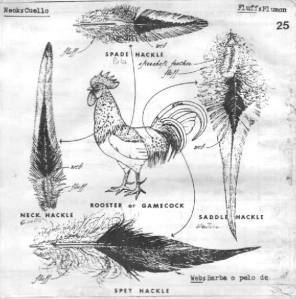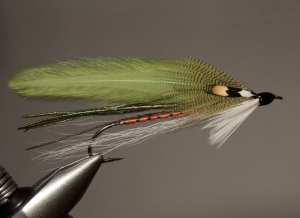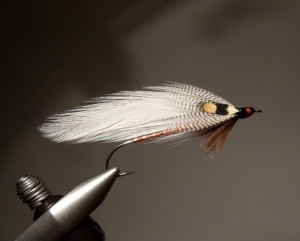It has been a long, long time since I posted anything here. Well, I’ve been busy. There were the scattered posts I made, the most recent but still old ones, referring to my drumming in a Classic Rock Band, my girlfriend, Mary – we got married on June 4th, and other things that have occupied my time. Between Mary and I, we have nine grandchildren. We also moved, from her home in Williamsport, Pennsylvania, where we were both living since July 2014, back to my home in Cogan Station. And that move was less than a month ago, on October 26th.
I am fairly active on Facebook, mostly for the band I am in, Pepper Street Band, and we also have a website: http://www.pepperstreetband.com. We played sixty-five bookings this year, and have twenty-five already lined up throughout 2017. But the boys have all decided we are not playing 65 times again this year. It will be closer to fifty.
I could write for days to try and get caught up, but why I am here now, well, it is because on Facebook, a friend and fellow fly tier just posted a photo of a book he bought a copy of: Ray Bergman’s first book, published in 1932, titled Just Fishing. He observed that there are no recipes for the fly patterns it contains. They were painted by Dr. Edgar Burke, who had done all the color fly plate paintings for Bergman’s books. I have been fortunate to personally see eight of the original plates Burke painted for Trout, (1938), and have a good idea of what his work represents in terms of translating that to tying materials used for specific patterns. So, thanking God for the data stored in a computer file, I can see that I created a particular Microsoft Word Document file on March 17, 2005. What is it? Ha! A detailed recipe list for all the flies in Just Fishing. I personally give this list an accuracy rating of about 99%, (Nobody’s perfect!).
So here it is:
Fly Pattern Dressings from Just Fishing (1932) by Ray Bergman – compiled by Don Bastian from close study of the color plates, since the actual dressings are not listed except for the streamer and bucktail patterns from the black and white photographs at the end of the list.
Plate 1 – Special Lures
Wet Fly Patterns:
Logan – Tag – gold tinsel; Rib – gold tinsel; Tail – red & yellow married; Body – brown floss; Hackle – brown; Wing – married yellow w/crimson stripe; Head – orange w/peacock herl at base of wing.
Brougham’s Cohoe – Tag – silver tinsel; Tail – golden pheasant crest; Rib – silver tinsel; Body -red wool; Hackle – red; Wing – dark brown turkey with thin strip of yellow at upper and lower edge; Head – black.
Never-Was – Tail – peacock sword fibers equal to body length; Body – peacock herl; Hackle – over-sized, dark green tied palmer; Wing – orange; Head – peacock herl & black.
Black Nymph Creeper – tie on 2x long hook – Tag – gold tinsel; Tail – guinea; Body – silver tinsel with sparse golden pheasant tippet at mid point, tyed as a top veiling equal to 2/3 length of tail; Wing – white hackle tyed streamer; Hackle – black collar; Horns – two fibers peacock sword.
Pink Nymph Creeper – tie on 2x long hook – Tag – gold tinsel; Tail – orange fibers; Rib – black silk; Body – pink floss with single strand of white ostrich herl as a top veil at second turn of rib; Wing – sparse peacock sword fibers; Hackle – pink and white collar intermingled.
Yellow Nymph Creeper – tie on 2x long hook – Tag – silver tinsel; Tail – two tips short yellow ostrich herl; Rib – black silk; Body – pale yellow floss with sparse golden pheasant tippet as top veil equal to end of tail tyed in just behind mid-point; Wing – yellow hackle tyed streamer; Hackle – yellow collar; Horns – two fibers of peacock sword.
Dry Fly Patterns:
Orange Fish Hawk – – Rib – gold tinsel; Body – orange floss; hackle – badger.
March Brown – Tail – long, sparse fibers of Mandarin flank; Rib – finest gold tinsel; Body – Hare’s Ear dubbing; Wing – barred turkey; Hackle – cree with little or no white.
Brown Spider (Hewitt) – Tail – brown hackle fibers; Body – tying thread – Hackle – Brown, over-sized; fronted with white.
Nymph Patterns:
R.B. Stone Fly Creeper – tie on 3x long hook – Tail – guinea fibers; body – yellow underside, brown above; Rib – black thread; Legs – guinea fibers in three separate bunches, the first just to the rear of mid-point, second half-way to head, third just behind the head.
Grannom Nymph – tie on 2x long hook – Body – medium olive dubbing, tapered slightly larger in thorax; Legs – finely barred teal flank tyed as a collar.
Inch Worm – tie on 4x long hook – body – thin light olive dubbing; hackle – light olive collar.
Blue Olive Nymph – tie on 2x long hook – Tail – dun fibers, short; Body – gray floss; Thorax – dark gray dubbing; Hackle – dark dun hen as a collar.
Pale Olive Nymph – tie on 2x long hook – Tail – light dun, short; Body – pale olive floss; Thorax – pale olive dubbing; Overback – light slate quill section over abdomen; Wingcase – light slate quill section over thorax; Legs – light dun hen fibers swept to sides.
Iron Blue Nymph – tie on 2x long hook – Tail – dark dun fibers, short; Body – dark gray floss; Rib – black silk; Thorax – Iron Blue Dubbing; Wingcase – dark slate quill section over thorax; Legs – Dark slate fibers swept to both sides.
Carot Nymph- tie on 2x long hook – Tail – brown hackle; Abdomen – orange floss; Thorax – gray dubbing; Hackle – light dun hen tyed as a collar.
Just Fishing – Plate 2 – Wet Flies
In the book illustrations, the tying style of nearly all these patterns differs significantly from those later shown in Trout (1938), and those in With Fly, Plug, and Bait (1947). There are scattered slight differences in the dressings, but the main variation lies in the style of hackling the flies. These patterns from Just Fishing were painted by Dr. Edgar Burke from originals furnished by Wm. Mills & Son in New York. Virtually all the wet flies illustrated in Just Fishing were tied using the older, traditional style of “collaring” the hackle, even in front of the wing. Bergman was among the early 20th Century angling writers to popularize the practical form of tying a wet fly using a “throat” or “beard” hackle. Though in 1850, James Wright, creator of the Durham Ranger, wrote of a “false” hackle. Wright also created the Greenwell’s Glory. All heads are black unless noted otherwise.
Green Drake – Tail – mallard flank dyed pale green; Body – pale green dubbing; Rib – peacock herl; Wing – Mallard flank dyed pale green; Hackle – brown; Head – Yellow with peacock herl.
Cahill (Dark) – Tail – Mandarin; Body – blue-gray fur; Wing – Mandarin; Hackle – brown.
Montreal – Tail – red; Rib – gold tinsel; Body – claret floss; Wing- dark brown mottled turkey; Hackle – claret.
Gray Hackle (Red) – Body – red floss; Hackle – Silver-gray Badger.
Red Quill – Tail – brown fibers; Body – stripped peacock quill; Wing – light slate; Hackle – red brown hen.
Fish Fin – Body – pink floss; Wing – White quill; Hackle – dark furnace.
Maginty (note spelling variation) – Tail – red and gray mallard; Body – alternate yellow and black chenille; Wing – white-tipped turkey; Hackle – brown.
Coachman – Body – peacock herl; Wing – white quill; Hackle – brown; Head – white with peacock herl.
Quill Gordon – Tail – dark dun fibers; Body – peacock quill; Wing – Mandarin; Hackle – dark dun.
Olive Quill – Tail – light olive fibers; Body – peacock quill; Wing – light slate; Hackle – light olive.
Seth Green – Rib – yellow silk; Body – dark green floss; Wing – dark brown mottled turkey; Hackle – brown.
Dr. Breck – Tail – jungle eye; Body – silver tinsel; Wing – married white with wide red stripe; Hackle – scarlet. Head: white with peacock herl.
Little Yellow May – Tail – three long fibers of pheasant tail; Body – pale yellow floss; Rib – gold tinsel; Wing – Mallard dyed pale yellow; Hackle – ginger.
Cowdung – Tag – gold tinsel; Rib – gold tinsel; Body – dubbed brown; Wing – light slate; Hackle – brown.
Brown Hackle – Body – peacock herl; Hackle – brown.
Professor – Tail – scarlet; Rib – gold tinsel; Body – yellow floss; Wing – gray mallard; Hackle – brown.
Silver Doctor – Tip – silver tinsel and yellow floss; Tail – golden pheasant crest; Tag – Red floss; Body – silver tinsel; Rib – oval silver tinsel; Wing – in order from top – Barred Mandarin, Florican, teal, yellow, blue, scarlet, topping of golden pheasant crest; hackle – beard of blue and guinea mixed; Head – red.
Orange Fish Hawk – Tag – gold tinsel; Rib – gold tinsel; Body – pale orange floss; Hackle – gray badger.
Beaverkill – Tail – long gray mallard; Body – white floss; Wing – light slate; Hackle – brown.
Royal Coachman – Tail – golden pheasant tippet; Body – peacock herl with band of red floss in middle; Wing – white; hackle – brown.
Grizzly King – Tip – gold tinsel; Tail – scarlet; Rib – gold tinsel; Body – dark green floss; Wing – teal; Hackle – badger.
Parmacheenie Belle – Tip – silver tinsel; Tail – married red and scarlet; Rib – silver tinsel; Body – yellow wool; Wing – married white with red stripe; Hackle – scarlet and white. (I corrected the spelling on this).
Montreal Silver – Tail – scarlet; Body – silver tinsel; Wing – dark brown mottled turkey; Hackle – claret.
Grannom – Tag – peacock herl; Body – buff wool; Wing – light brown barred turkey; Hackle – Brown.
Black Gnat – Body – black chenille; Wing – slate; Hackle – black.
Lord Baltimore – Tail – married yellow and black; Rib – black silk; Body – orange floss; Wing – Black with jungle eye; Hackle – black.
Red Tag – Tail – red wool; Body – peacock herl; Hackle – brown tied palmer.
Light Cahill – Tail – Mandarin; Body – pale ginger dubbing; Wing – Mandarin; Hackle – ginger.
Gold Ribbed Hare’s Ear – Tail – Mandarin; Rib – gold tinsel; Body – hare’s ear dubbing; Wing – slate.
Hawthorne – Tip – gold tinsel; Tail – black fibers; Body – rear 2/3 black floss, front 1/3 black wool or fur; Wing – black; Hackle – black.
Wickham’s Fancy – Tail – brown fibers; Body – gold tinsel; Hackle – brown tied palmer; Wing – slate.
Campbell’s Fancy – Tail – golden pheasant crest; Rib – oval gold tnsel; Body – gold tinsel; Wing – teal; Hackle – brown.
White Miller – Tip – silver tinsel; Rib – Silver tinsel; Body – white floss; Wing – White; Hackle – white; Head – white with peacock herl.
Blue Quill – Tail – dark dun fibers; Body – peacock quill with light and dark bands; Wing – slate; Hackle – dark dun.
Iron Blue Dun – Tail – brown; Body – rear 1/3 red floss, front 2/3 gray dubbing; Wing – dark slate – Hackle – brown.
Just Fishing – Plate 3 – Dry Flies
Owre – Tail – gray mallard; Tag – gold tinsel; Body – cream dubbing; Wing – Mandarin; Hackle – ginger.
Light Hendrickson – Tail – Mandarin; Body – medium blue-gray fur; Wing- Mandarin; Hackle – light blue dun.
Light Cahill – Tail – Mandarin; Body – cream dubbing; Wing – Mandarin; Hackle – ginger.
Wallkill – Tail – cream; Body – olive floss; Wing – Mandarin; Hackle – cream.
Hendrickson Egg Sac – Tail – Mandarin; Body – gray floss, yellow chenille tag; Wing – Mandarin – Hackle – dark dun.
Cahill (Dark) –Tail – Mandarin; Body – dark blue-gray fur; Wing – Mandarin; Hackle – brown.
Pinekill – Tail – Mandarin; Body – gold tinsel; Wing – Mandarin; Hackle – furnace.
Bataviakill – Tail – brown fibers; Body – black floss; Wing – Mandarin; Hackle – olive.
Quill Gordon – Tail – dark dun fibers; Body – peacock quill; Wing – Mandarin; Hackle – dark dun.
Special Queen – Tail – golden pheasant tippet; Body – gold tinsel palmered with under-sized brown hackle; Wing – Mandarin; Hackle – brown.
Basherkill – Tail – pale yellow fibers; Body – light olive floss; Wing – Mandarin; hackle – pale yellow.
Paulinskill – Tail – cream; Body – white floss; Wing – Mandarin; Hackle – ginger.
Hendrickson – Tail – Mandarin; Body – dark gray fur; Wing – Mandarin; Hackle – dark dun.
Brown Bivisible – Tail – brown fibers; Body – brown hackle; few turns of white hackle in front.
Badger Bivisible – Tail – badger; Body – badger hackle, few turns of white in front.
Black Bivisible – Tail – black; Body – black hackle, few turns of white in front.
Fan Wing Royal Coachman – Tail – golden pheasant tippet; Body – peacock herl with red floss band in center; Wing – white duck breast fan-wing; Hackle – brown.
Bridgeville Olive – Tail – cream fibers; Body – white floss; Wing – mallard flank dyed yellow; Hackle – cream.
Fan Wing Pink Lady – Tail – golden pheasant tippet; Body – pink floss; Rib – gold tinsel; Wing – white duck breast fan- wing; Hackle – brown.
Blue Spider – Tail – Mandarin; Body – gray fur; Hackle – blue dun, large.
Wickham’s Fancy – Tail – brown fibers; Body – gold tinsel with palmered brown hackle; Wing – slate; Hackle – brown.
Royal Coachman – Tail – golden pheasant tippet; Body – peacock herl with red floss band in center; Wing – white quill; Hackle – brown.
Gold Ribbed Hare’s Ear – Tail – brown; Body – hare’s ear dubbing; Rib – gold tinsel; Wing – slate; Hackle – rabbit fur guard hairs.
Black Gnat Silk Body – Body – black floss; Wing – slate; Hackle – black.
Coachman – Body – peacock herl; Wing – white; Hackle – brown.
Pink Lady – Tail – golden pheasant tippet; Body – pink floss; Rib – gold tinsel; Wing – slate; Hackle – brown.
Little Marryat – Tail – ginger fibers; Body – light gray fur; Wing – light slate; Hackle – ginger.
Iron Blue Dun – Tail – two long fibers moose body hair; Body – rear 1/3 red floss, front 2/3 gray fur; Wing – dark slate; Hackle – brown.
Note: On the Royal Coachman, RC Fanwing, and Pink Lady fan wing, I also add a tag of flat gold tinsel.
Special Flies – from Just Fishing – a short list of streamers and bucktails.
R.B. Streamer – Wing – white polar bear, yellow bucktail topping; Body – silver tinsel; Cheeks – scarlet feathers.
Lady Doctor – Wing – white polar bear, black bucktail topping, jungle cock eye; Tail- yellow; Tag – red floss; Body – yellow with palmered yellow hackle; Cheeks – scarlet feathers.
Ballou’s Special – Wing – sparse red bucktail underwing, white marabou topped with 8 or 9 peacock herl tips, jungle eye; Tail – golden pheasant crest; Body – silver tinsel.
Highlander – Tail – Dominick (grizzly); Body – silver tinsel; Wing – yellow hackles under badger hackles, long jungle eye; badger hackle collar.
Conger’s Lassie – Tail – Dominick (grizzly) hackle tips; Body – gold tinsel; Wing – orange and badger hackles, long jungle eye; Hackle – black collar.
The patterns noted with the initials “RB” are Ray Bergman originals. And remember, written fly pattern directions, when correct, should be easily tied correctly without a photo or image. Married wing and tail components are always listed from the top down. And a tag is always under the tail, and a tip is at the end of the body and always encircles the tail.






